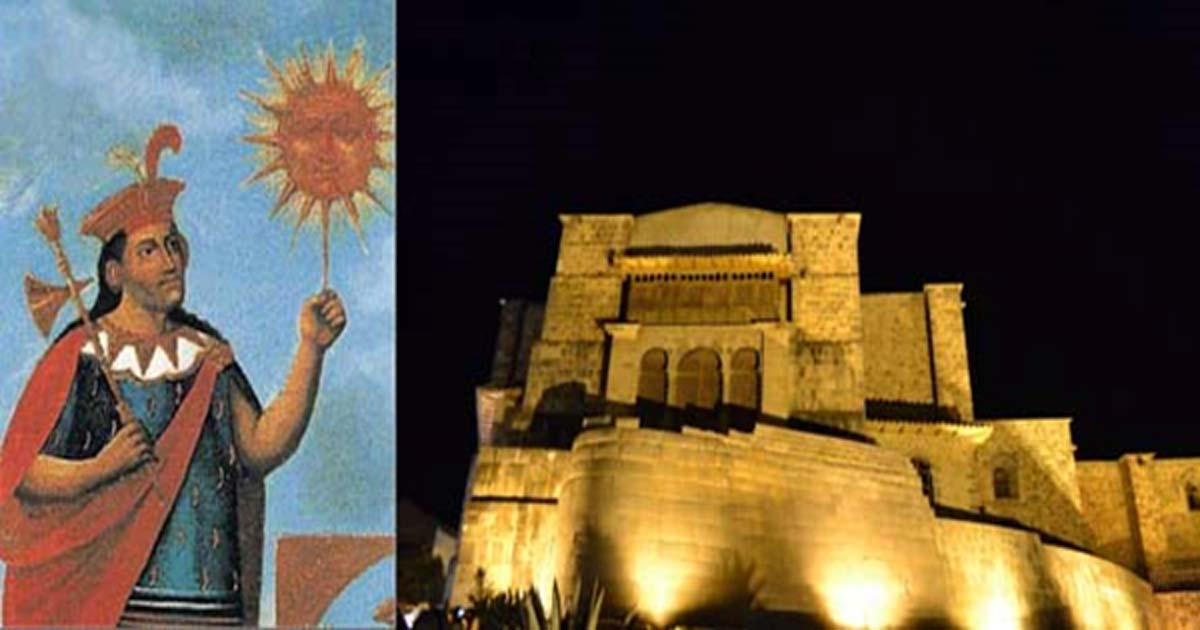By Ken Jeremiah
Ancient Origins
Peru has a rich and mysterious history. With extant indigenous groups such as the Uros, Quechua, Aymara, and the Jivaro, which are known for their head-shrinking techniques, and historical populations like the Wari and the Chancay, known for their amazing mask-making skills, Peru is an anthropologist’s dream. Some of the ancient Peruvians were wiped out when the Inca invaded, and others moved out into Lake Titicaca, the world’s highest navigable lake, never to return. The Inca built (or at least added to pre-existing) large, enigmatic structures, such as Machu Picchu, located just outside of Cusco, the axis mundi of the Inca.
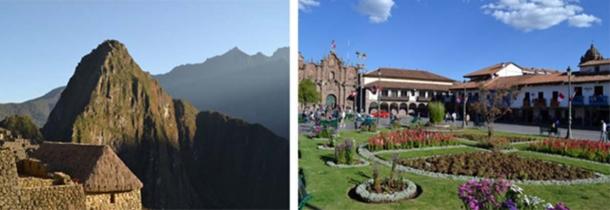
View of Machu Picchu buildings and Wayna Picchu mount (left) and Cusco (right), Peru
The Monumental Sites of Cusco
Outside of Cusco are other amazing sites, such as Tambomachay: a huaca (holy building) perched upon a sacred, natural spring, which the Inca likely used for ritual ablutions, and the Incan fortress of Sacsayhuaman. To reach this expansive site, you climb up a narrow, winding dirt road. It is built of enormous limestone, andesite, and diorite stone blocks, the largest is 361 tons, and it is unknown how they were able to transport such blocks from the quarry nearly five miles away to their present resting place.
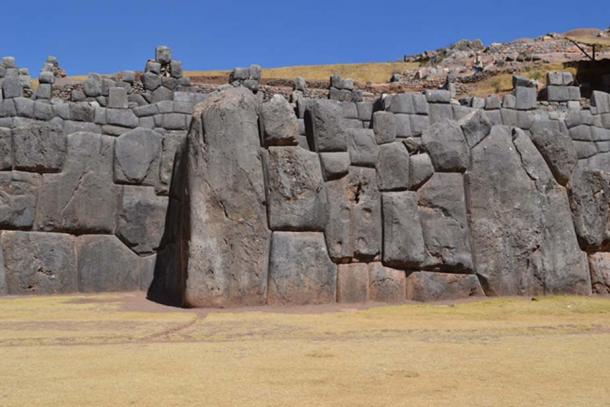
Sacsayhuaman
The Mighty Temple of the Sun, Koricancha
The amazing Temple of the Sun, Koricancha (also spelled Qoricancha), which means “golden courtyard” in Quechua. Initially called Inti Wasi, the Inca dedicated it to the sun god Inti, and as is the case with many temples dedicated to sun deities throughout the world, they adorned it with gold.
At the height of their power, this temple was one of the most important in the entire empire. The Inca used large stones, similar to those used in the construction of Machu Picchu and Sacsayhuaman, to create the walls. Then, they inserted golden plates, and decorated the temple with golden vases and statues. The mummified bodies of deceased Incan kings were also placed inside, and the Inca likewise honored them with royal clothing, headdresses, and golden ritual objects. These mummies, while certainly not alive, were not considered dead, and the Aclla Cuna (Virgins of the Sun) cared for them. Other important artifacts were in Koricancha. Life-sized golden statues of deities and deified ancestors were in the courtyard, and golden altars were the stage upon which the Aclla Cuna prepared ritual foods and offerings. Among all of the sacred artifacts, however, one in particular was revered: a sun disk made of pure gold.
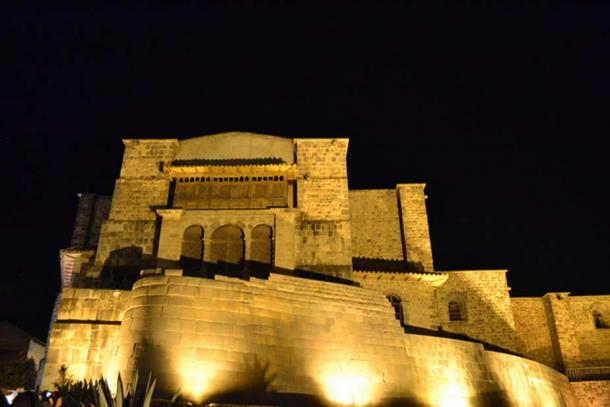
Koricancha, originally called Inta Wasi
Key to the Gate of the Gods
According to legend, this disk was more than an ornamental or even ritual object. It was the key to a sacred doorway called La Puerta de Hayu Marca, or the Gate of the Gods. It is said that the first Incan priest-king Aramu Muru took this golden disk to the site of an ancient, spiritual city in which the inhabitants could commune with gods. Readers may find this idea strange, but even in modern times, legends from worldwide cultures relate that ancient, even antediluvian civilizations were in contact with gods. In the Christian tradition, God became angry and decided to kill all humans save Noah and his family and friends, and He tasks him with saving two of each species. The Sumerian, Akkadian, and more than 500 other traditions have similar accounts of a great flood and divine beings reaching out to assist a select group of sentient beings. Even in modern times, Mahayana Buddhists meditate upon Bodhisattvas, savior deities who supposedly assist humans. Catholic and Orthodox Christians likewise pray to saints, deified human beings who are closer to divinity. While such saints are alive, they are similarly thought to have the ability to commune with God. Therefore, when Incan legends speak about an ancient city in which its inhabitants were closer to Inti, this is universal and unceasing nomenclature, and the tale should not be dismissed outright because of it.
Worldwide myths and legends generally spring from something, some fraction of truth that storytellers elaborate upon throughout the centuries. Good questions to keep in mind are, “What is the real truth?” and “What is the real history?”
Incan Legend of Aramu Muru
According to the Incan legend, Aramu Muru headed out to this sacred city (that archaeologists have not discovered), which supposedly existed near Lake Titicaca. He approached a giant doorway cut into an artificially flattened mountainside. In the center of this stone indentation was a hollow into which he placed the sun disk. When he did so, the stone door shimmered and became bright. Aramu stepped through the portal and it thereafter returned to stone. He was never seen again, and the door never changed again. The solar disk was allegedly returned to Koricancha in Cusco, where the Spaniards later likely looted it along with the temple’s other golden objects. This legend would have likely been dismissed as an outright fairy tale if it were not for two facts: the native populations continue to pass along this story as a historical occurrence, and the described doorway actually exists near Lake Titicaca, approximately an hour’s drive from Puno, which some claim to be the country’s most dangerous city.
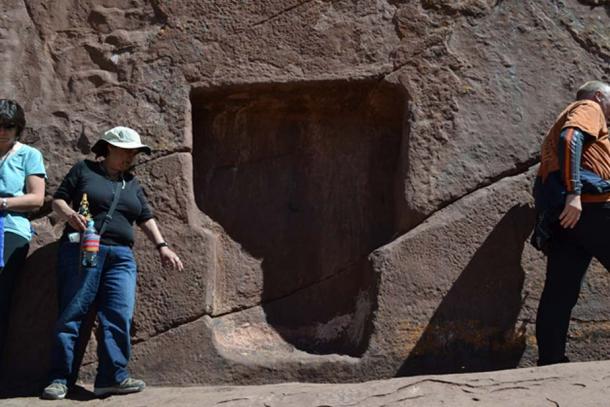
La Puerta de Hayu Marca: The Gate of the Gods
Visiting the Gate of the Gods
I decided to visit the Gate of the Gods. I arranged for a driver who could translate from Quechua to Spanish to meet me the following day; I hired him to take me to the Gate of the Gods and obviously to help me to speak with the locals. I can communicate in Spanish without difficulty, but I don’t know more than a word or two in Quechua.
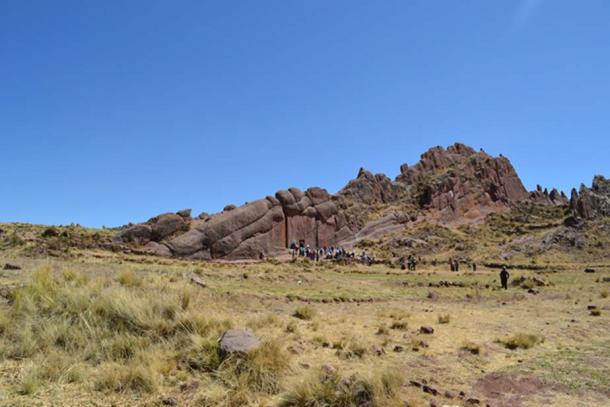
La Puerta de Hayu Marca from a distance
He was successful, and within a half-hour, we arrived. I began taking pictures of the site from a distance, and as we approached, I realized there was a group of tourists visiting it. They followed an unusual procedure. An indigenous man was burning coca leaves in front of the doorway, an offering to the gods. Each visitor placed a few leaves into the burning bowl and then proceeded to stand in a tall recessed shaft to the left side of the portal. There they crossed their arms in a manner reminiscent of Egyptian sarcophagi. When it was their turn, they stood in front of the doorway with outstretched arms before kneeling down in front of it. They bowed, then stood up, continued walking to the next recessed shaft that flanked the door’s right side, and copied the previous actions. My driver turned to me and asked, “What are these people doing?”
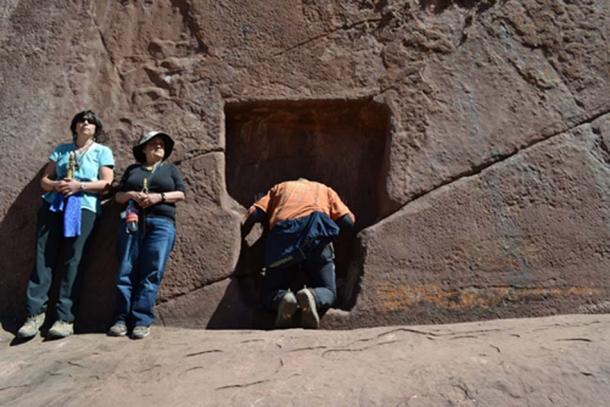
Visitors at God’s Gate
He didn’t speak English. I told him I would ask the visitors and then let him know. After questioning several people who followed this bizarre pattern, it became clear that no one knew why they were doing what they were doing. Several claimed that they could feel energy emanating from the rock, but when I put my hands on it later, I concluded that such visitors were (possibly) delusional. They didn’t know much about its history, and one of them probably didn’t even know what country she was in, since she told me that “the Mayan gods use the doorway.” I considered explaining that this is an Incan, not Mayan site, and that there were no Mayans in Peru, but then decided she would be likely happier to remain ignorant and I let it go. When I conveyed my findings to my translator, he laughed aloud. Now it was his turn. We walked past the monument for quite some time until we came upon some native inhabitants (who could speak Quechua), and we asked them about the doorway.
The Stone ‘God’s Gate’
It is 23 feet tall, and the small circular indentation in its center, where Aramu Muru allegedly placed the sun disk, is approximately six feet off the ground. No one knows who built it, when it was built, or its purpose, but Native American legends hold that the gods live in a different dimension, and this carving is a doorway to that realm. Supposedly, Incan heroes had passed through the gate and attained immortality. One woman commented that some of them had even come back for short periods to assist humans, after which they returned to the land of the gods. They claimed that the doorway was opened with a special disk, likely the same one that was once at Koricancha. However, they did not know much more than that.
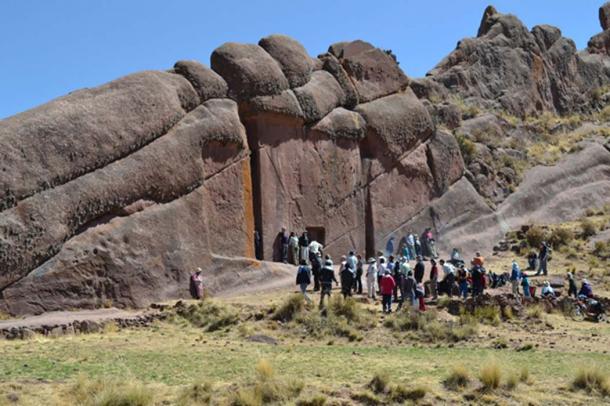
The stone gate structure known as the Incan God’s Gate or Gate of the Gods
Later that evening, I scoured the Internet for information about the site, and came across outlandish theories, including some that traced Aramu Muru (also called Amaru Meru) to the missing continent of Mu, claiming he was an enlightened ruler who joined the Americas together, hence the name Amaru-ca, Ameru-ca, Ameri-ca (Land of the Serpent). Other theories were even stranger. The truth is, there is no historical evidence that Aramu Muru even existed. The name only shows up in unsubstantiated tales. Also, there is no evidence that explains what the door was actually used for, but it is likely that the indigenous tales of a man placing a solar disk in the central indentation is real.
Early religions all over the world, including the Americas, were animistic. Spirits resided in natural objects. Gold, symbolic of the sun, was considered especially holy, and carving it into shapes that represented their deities more fully would have made them objects of veneration. La Puerta de Hayu Marca was likely carved specifically to hold such a golden, venerated object, so people from surrounding villages could visit it and make offerings. Shaman priests may have even stood in front of it and performed ceremonies, just like Catholic priests stand in front of the cross or crucifix and hold mass. The cross is high, so the priest does not block it. The indentation which held the sun disk is also high (six feet, 1.82m) when considering the average height of the local indigenous population (five feet, 1.52m).
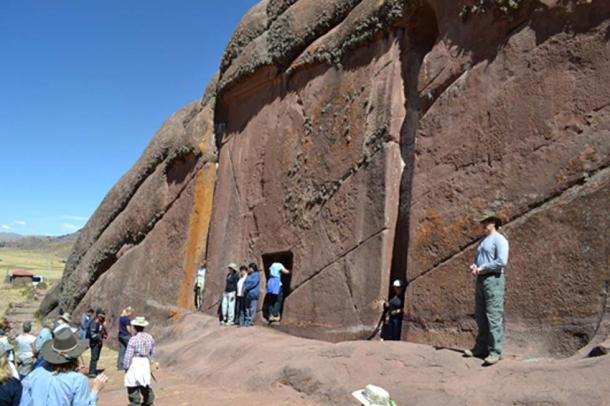
Gate of the Gods and the tourist ritual
In addition, a worn-down step in front of the monument, which today looks like a ramp, makes this even more likely. This most-likely usage of the stone carving has certainly been exaggerated and expanded upon throughout the centuries, and people used their imaginations to add fanciful and supernatural elements to a real historical phenomenon. Such tales have made this site one of the most famous in the world, and people from diverse countries continue to visit it, bringing money to the local populations, which definitely need it. No matter what, the Gate of the Gods is symbolic of the great unknown, and it causes people to consider otherworldly possibilities. No matter how mysterious such tales may be, the real truth is embedded within, waiting to be extracted.
Copyright © Ken Jeremiah
Top image: Colonial image of Manco Cápac and the Sun God, Inti. (Public Domain),Koricancha (Author Provided)
All other images provided by the author.

